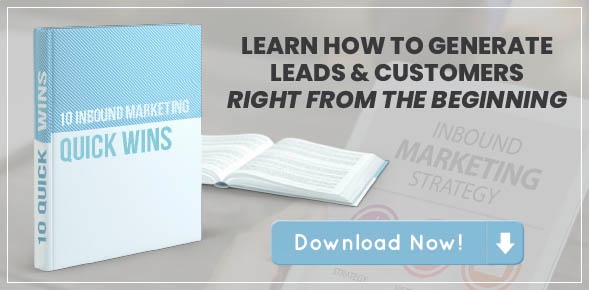Think of the amount of digital ads, emails and other marketing messages you’re bombarded with in a day. How many of these messages actually catch your interest or address a need? We’re betting not many.
That’s why many marketers and businesses are using behavioral marketing to reach their target audiences.
How It Works
Behavioral marketing is about gathering information on your ideal customer - how they perform various online activities, like purchases and browsing - and using this data to build better user experiences.
[DOWNLOAD]

You can use third-party apps to see how people are engaging with your brand, such as heat maps and web analytics. By tapping into their behavior, you can get insight on their specific needs and interests, so you can improve the way you sell to them.
Everywhere You Look
Have you noticed how you get ads for things you’ve searched up online? For example, you might have looked at plane tickets to a particular destination, then see a Facebook ad for plane tickets to the exact same place.
This is a great example of behavioral marketing.
One way to use behavioral marketing is targeting a specific demographic in your next ad campaign, for example. 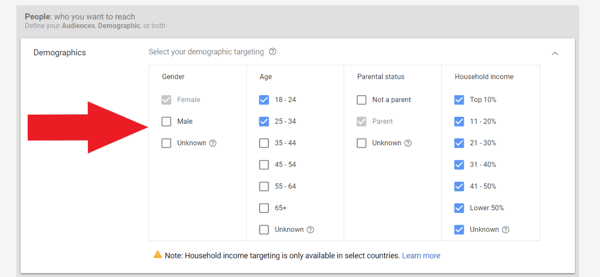
Source: Tinuiti
Research from McKinsey shows that companies that use consumer data to their advantage outperform their competitors by 85% in sales growth and more than 25% in gross margins.
Wondering what behavioral marketing looks like in action? Take a look at the examples below.
Examples of Behavioral Marketing Tactics
1. Email: Retargeting
A common way to save a sale and reduce abandoned carts is to re-engage prospects by email.
Before sending an email, however, it’s important to understand why prospects didn’t follow through with the purchase in the first place. Here’s an approach that not only uses humor to recapture a sale, we also think it can work well for niche industries like software-as-a-service (SaaS).
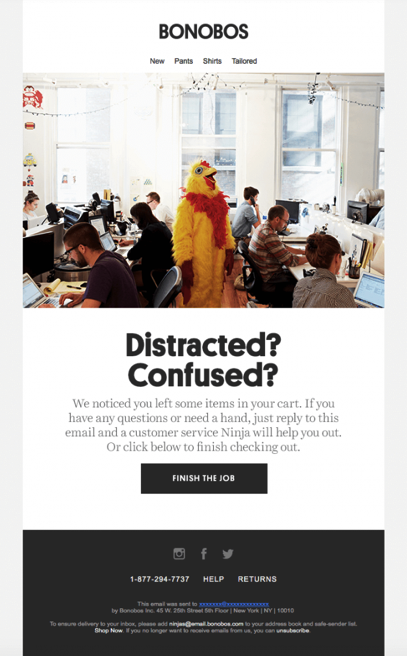 Source: Chainlink
Source: Chainlink
2. Social Media: Advertising
Your goal might be to target people who visited your site, but didn’t reach out to your sales team or make a purchase. We found this example that has the right messaging to persuade them to come back.
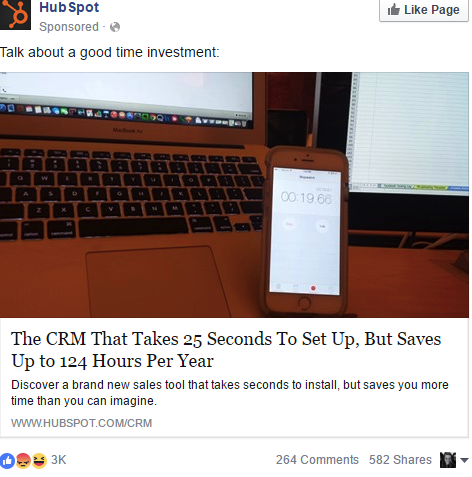 Source: WordStream
Source: WordStream
HubSpot uses Facebook as a platform to launch a targeted ad campaign. As you can see, it tackles a common fear of losing time on a software that could take forever to set up. Compelling copy and imagery is key.
3. Website: Entry Pop-Up
Get prospects to engage with you once they find you, like with an entry pop-up tactic. Here's how this tactic works:
When a visitor is directed to your webpage from another source, like Facebook, they are shown an entry pop-up. It can be an effective strategy to motivate people to take further action.
Something as simple as having them follow your Facebook page can help them convert in the long run.
Mashable uses this tactic to increase conversions. They ask visitors - who are directed to their website from Facebook - to like their Facebook page, so that they can stay connected.
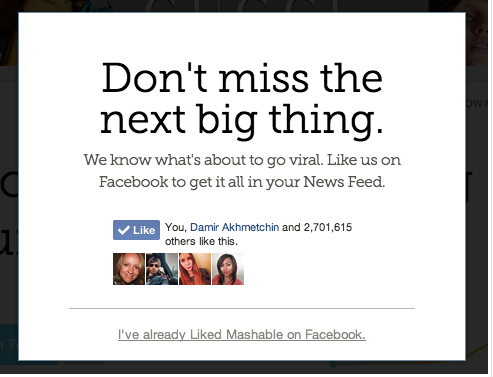
Source: Wishpond
Deliver Content People Want to Click
Want to learn more effective marketing strategies that bring in results and don't take much effort? Learn 10 simple quick wins to generate leads and sales. Download our guide below.
